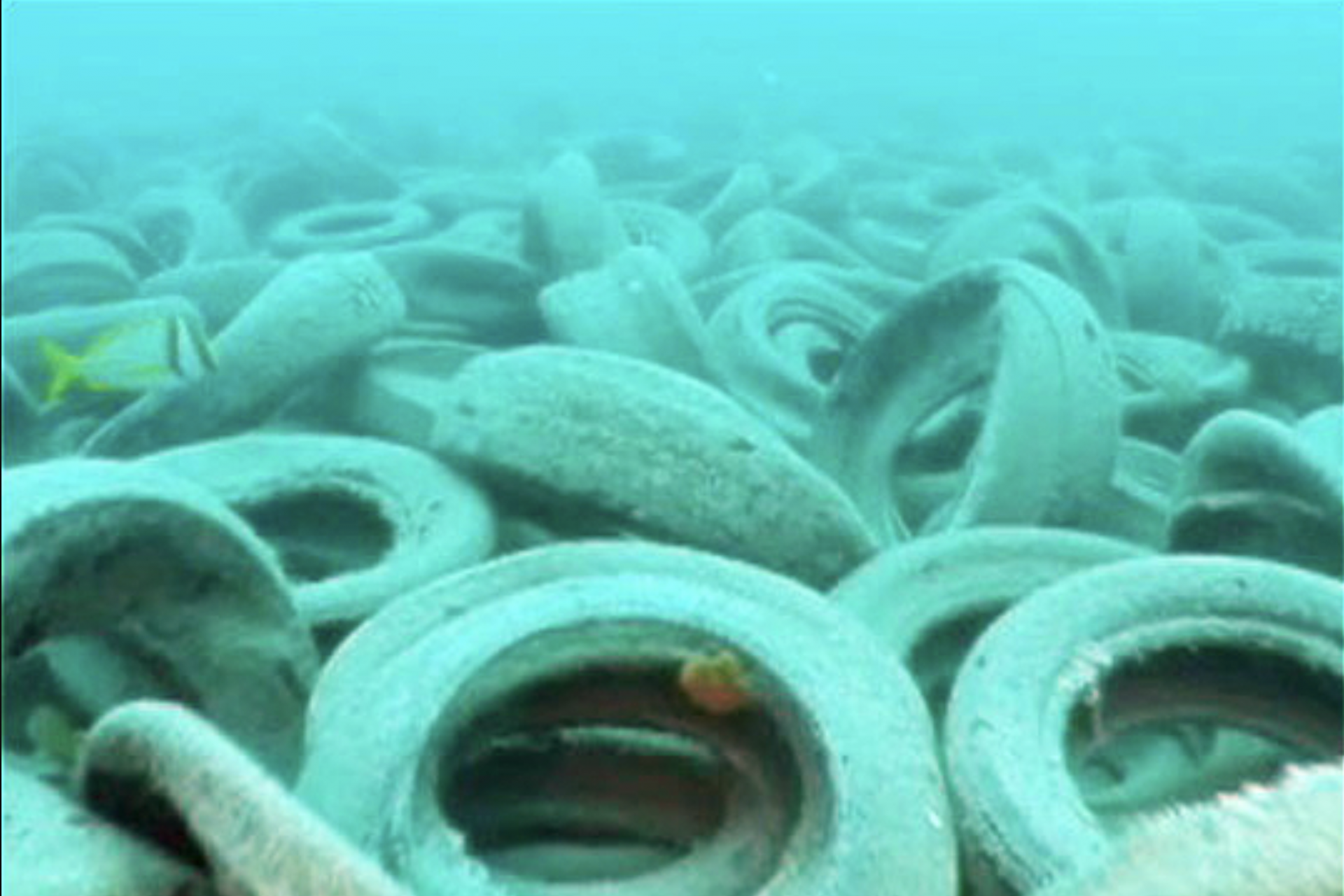Osborne Reef is the worst U.S. environmental disaster you've never heard about
The United States has had countless man-made environmental disasters unfold across the union in its long history but there are few that are as frustrating as the disaster that's been unfolding off the coast of Florida for the last seven decades.
The coastline of Florida’s Broward County is home to some of the most beautiful beaches in the U.S. but just beyond the shoreline you'll find the site of a would-be man-made fish habitat known as Osborne Reef, and it was constructed from millions of rubber tires.
The long and short of Osborne Reef's creation is that a group of fishermen in Florida were trying to figure out a way to grow the reefs near Fort Lauderdale.
The fishermen wanted to attract more fish to the area and they settled on the idea of using millions of old, discarded tires to create a giant artificial reef for ocean fish. It was meant to act as a new habitat, but it didn't work out well.
Project Baseline Gulfstream noted the plan to build an artificial reef ultimately failed and the area became an environmental disaster. “It was speculated that corals would attach and grow on the tires, but it is evidently clear today that this has hardly happened.”
Photo credit: Twitter @ ocen4u
One of the big reasons why the tire reef failed was because the tires were too mobile in the water and kept shifting around, even though many were originally tied together with nylon and steel bands, bonds that eventually broke down or eroded in the ocean water.
Photo credit: Twitter @ ocen4u
“This mobility essentially destroyed whatever growth had attached to the tires,” Project Baseline Gulfstream said, “and prevented any new formation and growth of organisms.”
Photo credit: Facebook @ ocen4u
Storms and hurricanes made the situation worse, and after a few particularly rough years in 1995 and 1998, officials began working on plans to clean up the Osborne Reef. But it wasn’t as easy as most believed it would be; several efforts have taken place so far.
Photo credit: Facebook @ ocen4u
“Over the years, many of the tires were mobilized by tropical storms and hurricanes, the movement of which caused damage to nearby existing coral reefs,” a statement on the Florida Department of Environmental Protection’s website read about the cleanup effort.
Photo credit: Facebook @ ocen4u
“The threat is serious,” the statement continued, “but the complexity and magnitude of the challenge of removing these tires has prevented any individual government agency from doing so,” and there have been a lot of attempts to remove the tires from the reef.
One of the biggest cleanup efforts took place in 2007 when a group of Army, Navy, and Coast Guard divers worked to pull up as many tires from the seafloor as they could and an NPR report from the time noted that they were netting roughly 1000 tires a day.
Photo credit: Facebook @ ocen4u
"You get down about 20 feet,” Army Diver Jason Jakovenko told NPR at the time, “and it starts to come into sight... It's like the moon or something. It's weird. It doesn't look like anything you can imagine. It's just tires for as far as you can see down there."
Photo credit: Facebook @ ocen4u
The operation was known as DiveExEast07 according to Wikipedia and it was able to remove about 10,000 tires in 2007.
Photo credit: Instagram @ ocen4u
Cleanup efforts the following year brought up 43,900 tires at a cost of roughly $140,000, and while that might sound like a lot of tires, it really wasn’t.
Photo Credit Wiki Commons By Navy Combat Camera Dive Ex-East
The Florida Department of Environmental Protection has estimated that between 1 to 2 million tires were dumped in the ocean to create the Osborne Reef and PsyOrg noted only 439,000 to 677,000 tires have been removed based on the available data.
"We don't really know," Pat Quinn, a biologist for Broward County and supervisor of the tire removal project. "We'll never be done," Quinn explained to Psy Org, which noted the tires are now spread across 34 acres of ocean floor—increasing the cost to remove them.
Photo credit: Instagram @ ocen4u
Psy Org reported that the previous cost to pull one tire up from the ocean floor was set at around $18.75 per tire for the last five years but that number has ballooned to $29.50 a tire based on the state’s current contract with removal companies that expires in 2028.
"People thought they were doing the right thing. They just didn't know it wasn't going to work very well,” Quinn told Psy Org, also noting that there were still a lot of tires to be cleaned up but it was more difficult now because they were “not piled all in one place.”
More for you
Top Stories































